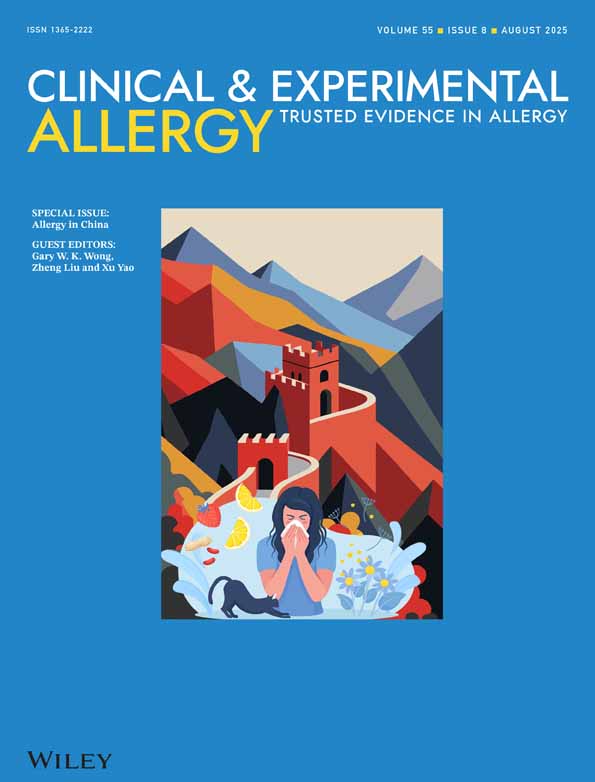Serum ovalbumin-specific immunoglobulin G responses during pregnancy reflect maternal intake of dietary egg and relate to the development of allergy in early infancy
Summary
Background The value of allergen elimination diets during pregnancy for primary prevention of infant allergy has been questioned. However, dietary compliance may influence effectiveness.
Objectives To monitor egg intake during a randomized controlled trial of egg avoidance throughout pregnancy and lactation by serial measurements of serum ovalbumin (OVA) IgG concentration in conjunction with dietary diary record and also, to analyse specific IgG concentrations at birth in relation to infant allergic outcome.
Methods Pregnant women, with personal or partner atopy, were randomized to complete dietary egg exclusion or an unmodified healthy diet before 20 weeks gestation. The infants were evaluated for atopy at 6 months of age. Serum food-specific IgG concentrations were determined by ELISA in maternal samples collected at study recruitment and during labour, and in infant samples at birth (umbilical cord).
Results Serum-specific IgG to OVA, but not the unrelated allergen, cow's milk β-lactoglobulin, decreased over pregnancy in egg-avoiding women only (P<0.001). Cord OVA IgG concentration correlated with maternal IgG at delivery (r=0.944; P<0.001), and for infants born to atopic women, cord concentration was higher than that of their mother's (P<0.001). Infants with the lowest and highest cord IgG concentrations were the least likely, and those with mid-range concentrations were the most likely, to be atopic by 6 months of age (P=0.008).
Conclusion Serum OVA IgG concentration reflects egg consumption, thereby indicating dietary allergen doses to which the developing immune system might be exposed. Trans-placental maternal IgG must be considered among early life factors that regulate infant atopic programming.




